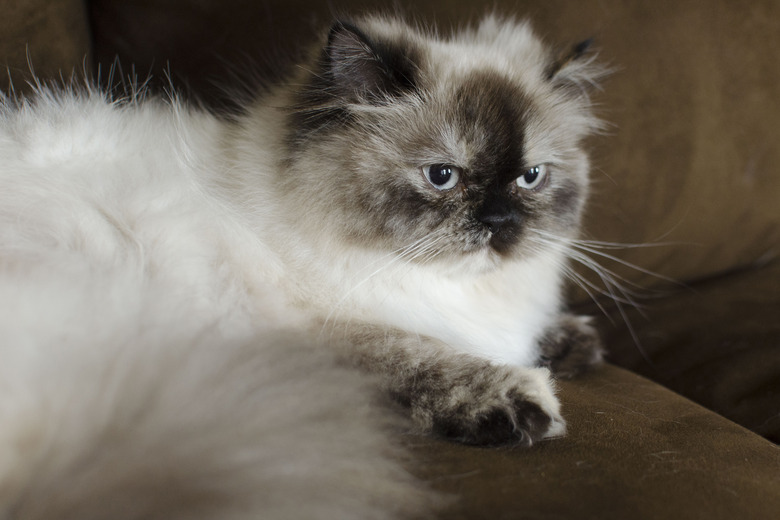What Causes Matted Cat Hair?
Cats tend to be meticulous in their grooming practices, so when you discover matted fur while petting your cat, you may wonder how that could happen. There are many reasons you may find matted hair on cats, including poor grooming habits due to pain and shedding.
Matted cat hair
Matted cat hair
Matted fur is hair that is knotted and tangled. It usually feels like a solid clump of fur on your cat's coat. Matted cat hair is most common on cats with long hair, although short-haired cats can experience matting as well. You will most commonly find matted hair on areas of the body with a lot of friction, such as the armpits, chest, behind the ears, the base of the tail, and between the legs.
There are several possible reasons for cat matting, and some of those cases may require treatment. It is important to get your cat checked out and also to remove the matted hair since it can cause further problems.
Normal causes of matted fur
Normal causes of matted fur
It is not uncommon for cats, especially those with longer hair, to develop mats while they are shedding. As dead fur sheds away from the skin, it may get caught in fur rather than falling away from the body. As a result, knots build up and form mats. If your cat has greasy or oily skin, she is more likely to develop mats, as the dead hair is more likely to get caught.
Poor grooming habits
Poor grooming habits
Cats are typically very good at grooming themselves, and this process is helped along by the barbs on their tongue. However, sometimes they cannot groom enough to prevent matting. Sometimes, a long-haired cat may develop mats even if he has excellent grooming habits. There could also be another issue.
Some medications may change the consistency of your cat's saliva, making it stickier. This increases the likelihood that dead hair will get trapped and tangled. Another reason your cat may not be grooming himself well is stress. If your cat is feeling vulnerable or afraid, he may not feel safe enough for grooming.
Medical conditions and cat matting
Medical conditions and cat matting
Arthritis is one common reason that cats no longer groom themselves well. While they may attempt to clean themselves, joint pain can make it difficult to reach certain parts of the body. Injuries are another source of pain that may make grooming painful for your cat. Overweight and obese cats may not have the flexibility to groom their entire body. Mouth problems, such as periodontal disease, can make grooming painful as well.
Lack of grooming can also be a symptom of a more serious medical condition, such as anemia, kidney disease, or cancer. When a cat doesn't feel well, grooming is less of a priority. If you notice new matted hair on your cat along with other abnormal symptoms or behaviors, be sure to contact your veterinarian.
Dealing with matting in cats
Dealing with matting in cats
Matted hair on a cat is not something you should ignore. In addition to a check-up to ensure your cat is healthy and pain-free, it is important to remove the mats right away. Mats will get worse if left untreated and can result in skin infections and irritation. Mats can also painfully pull on the skin as your cat moves around.
For mild matting, you can attempt to remove the mats on your own. Work the tackle out with your fingers or a comb. If your cat doesn't cooperate or if the matting is severe, it is best to have a veterinarian or professional groomer comb or shave the cat. Cats have very sensitive skin that is easily damaged, so it is best to avoid trying to cut out mats on your own.
